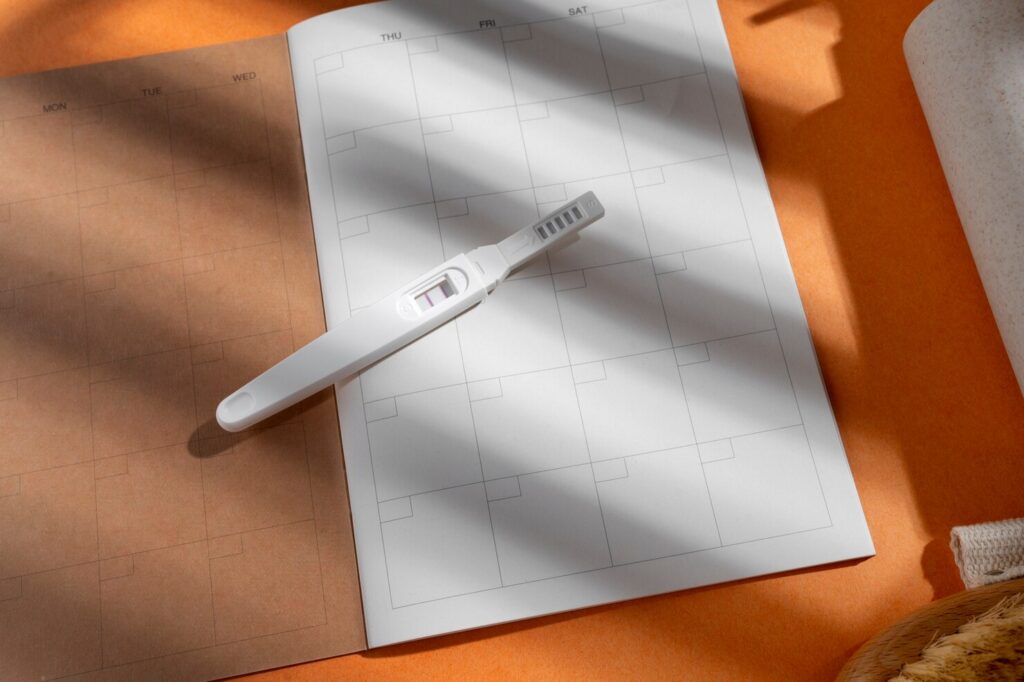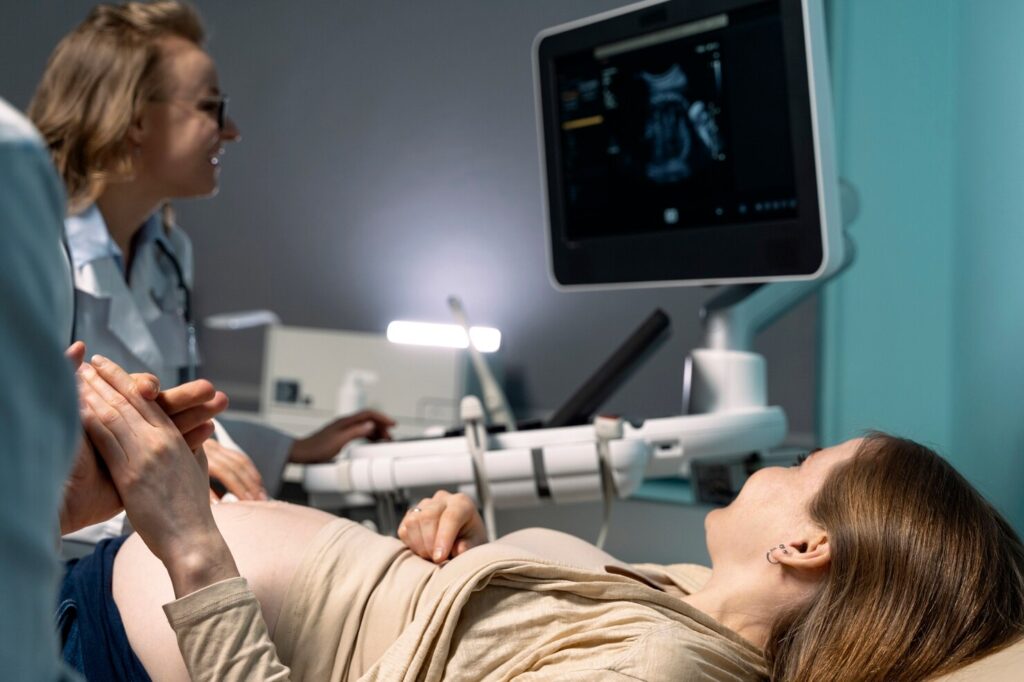Fertility is an indicator of whether a woman can conceive and carry a child. A fertility test is conducted to determine its level, and based on the results, appropriate treatment is prescribed. Indicators can be determined in several ways, as well as enhanced.
Fertility is the ability of a woman or man to have a child. This indicator is influenced by age, genetic factors, environment, and lifestyle. Generally, people seek to determine a woman’s or man’s fertility when conception has not been successful for a long time. Women need to see a gynecologist to conduct the test.
Egg cells in a woman’s body originate during fetal development. By the time a girl reaches adolescence, their number is about 400 thousand. Egg cells do not renew in the body, which is an important factor to consider.

As soon as the puberty period begins, the egg cells also start to mature gradually. The ovulation process involves the release of a mature egg from the follicle. This directly affects whether a woman is capable of conceiving a child or if difficulties will arise. The fertilization of the egg occurs next: it travels through the fallopian tubes to the uterus and attaches to its walls. This is when the gradual development of the fetus begins.
Female fertility is influenced not only by ovulation. Its changes are subject to various factors:
- the fallopian tubes must have normal patency;
- The endometrium must have sufficient thickness — this affects the success of embryo implantation and its further development;
- The cervix and the uterus itself must be healthy for a woman to carry a child normally;
Various hormones affect the female reproductive system. Thus, female fertility is about 40% dependent on hormonal balance. This factor is usually assessed based on three parameters — can she conceive, carry, and give birth to a child. If a woman is only capable of 2 factors, the indicator is low; if she can do all 3, it is considered normal.
Main stages of reproductive age
A woman’s reproductive age is conventionally divided into four stages:
- Early reproductive. Period — from the onset of menstruation (at age 10-13) to 20 years old. It has several characteristics: the menstrual cycle is establishing, ovulation is very rare or completely absent, hormonal levels fluctuate. At this stage, there is a high likelihood of becoming pregnant.
- Average reproductive. Its duration is 20 years. During this period, the cycle is stable, as is the hormonal background. There are no health issues. It is the ideal time to conceive and carry a child.
- Late reproductive. Lasts until 45 years, sometimes a little longer. The hormonal balance is unstable, while the cycle and ovulation remain stable. Age-related changes are occurring in the body. Pregnancy is possible naturally, but active medical assistance may be needed during the pregnancy;
- Declining fertility. Lasts from 46 to 60 years. A woman begins menopause. In other words, the menstrual cycle either becomes irregular or ceases altogether. Furthermore, hormonal levels fluctuate significantly, accompanied by characteristic symptoms. Natural conception is impossible, and to carry a child, a hormone therapy course is required.
Regardless of the stage of fertility age, it is advisable to consult a gynecologist before beginning active attempts to conceive.
How to Determine Fertility Levels
A fertility analysis involves a detailed consultation with a doctor and a gynecological examination. Using ultrasound and analysis, a woman’s egg reserve can be assessed. It’s also recommended to take hormone tests. Additionally, it’s wise to test for sexually transmitted diseases.
If necessary, tests may be conducted to study the patency of the fallopian tubes. One of the most important factors directly affecting a woman’s fertility is the quantity and quality of eggs in the ovaries, or in other words, the ovarian reserve.
You can determine the days with the highest chances of successful conception using a simple calendar. Ovulation occurs in the middle of the cycle, approximately on the 15th-17th day. Therefore, count 5 days in one direction and 2 days in the other direction from this date. This method is not the most accurate, as each body has its own characteristics.

You can determine fertility using other methods:
- By basal temperature. It should be measured every morning in the rectum and recorded on a chart. As soon as a slight decrease in temperature is noticed, followed by a sharp rise, this is the first sign of ovulation;
- By cervical secretions. On fertile days, they become more voluminous, and their consistency changes—they become stretchy and visually resemble egg whites;
- By ovulation tests. They are easily available for purchase at any pharmacy. The principle of the test is simple: immerse the test strip in a container of urine. It is optimal to do this in the morning, as the level of HCG is highest then.
In addition to the methods listed above, fertility can be determined with an ultrasound examination. This method is rarely used, although it is highly accurate. Determining fertile days significantly increases a woman’s chances of conceiving in the current menstrual cycle.
Fertility rate and how to calculate it
There is a distinction between the fertility index and the fertility coefficient. The latter is a macroeconomic indicator. It shows the ratio of the average number of children born in a country per woman of fertile age. The index can range from 0 to 10, where 10 indicates a high chance of becoming pregnant.
When determining the coefficient, an ovarian ultrasound can be performed. The examination is conducted on the 5th-6th day of the cycle. The doctor assesses the size, number of growing follicles, and the ratio of specialized tissues. Based on the fertility analysis, a forecast is drawn up determining the likelihood of conceiving a child in the near future.

You can also determine the coefficient using a hormone analysis. The level of Anti-Müllerian Hormone (AMH) determines the number of follicles in a woman’s ovaries. This allows for the assessment of reproductive function effectiveness. In turn, AMH levels influence monthly ovulation. Low levels of AMH indicate a critically low number of follicles in the ovaries, making it very difficult to carry a pregnancy to term in such cases.
What Factors Influence
It should be noted that a woman’s fertility level changes throughout her life. Several factors influence it, including:
- Age. Each year, the number of eggs decreases, and anovulatory cycles occur more frequently;
- Excess or insufficient weight, as it affects the hormonal balance;
- Regular stress leads to hormonal imbalance;
- Early menopause;
- Diseases that affect hormonal levels;
- Fallopian tube obstruction disorders;
- Early surgical interventions in the uterus.
It is always necessary to consider these factors when assessing female fertility. Some of them lead to the inability to conceive, while others affect the ability to sustain a pregnancy. Various disorders can be permanent, some temporary. This directly affects the proposed treatment.

Ways to Enhance
As soon as a woman is diagnosed with any health problems that hinder normal conception, it is advisable to immediately start the treatment prescribed by the doctor. This can be either medication therapy or surgical intervention. Improving the indicators and giving birth to a healthy child can be achieved by following these rules:
- Maintain a regular sexual life (sexual intercourse at least 2-3 times a week);
- Balanced nutrition (no low-calorie diets, avoid junk food, include a variety of foods in the diet);
- Completely quit harmful habits, including alcohol and smoking;
- Take vitamin complexes;
- Minimize caffeine intake;
- Minimize stressful situations;
- Maintain water balance.
To restore normal state before pregnancy, various vitamin-mineral complexes or supplements can be taken. Before taking them, it is absolutely necessary to consult with your doctor, as there are certain contraindications.

All these recommendations have a positive effect on a woman’s fertility. It is necessary to adhere to the rules regardless of fertility level and previous unsuccessful pregnancy attempts. If conception does not occur after a year of active attempts, it’s worth consulting a doctor to determine the reasons.
High Level Risks
After conducting fertility tests, the results are divided into three levels. If the level is low, it means that the woman is only capable of conceiving a child. A normal level indicates that the woman can become pregnant without medical intervention. Additionally, this increases the chances that a woman can give birth without resorting to hormonal stimulation.
A high level directly determines the ability to conceive. Furthermore, the chances of repeat pregnancies with minimal intervals increase several times. It also raises the likelihood of conception occurring in the middle of the menstrual cycle or during lactation. No contraceptive method provides 100% protection.
If a woman has a high level of fertility, the likelihood of becoming pregnant while using contraceptives increases several times. Therefore, selecting contraceptive methods presents certain challenges. Given this, it is very important for a woman to monitor her health and regularly visit a gynecologist, including undergoing a fertility test. This will protect against various risks.
The level of fertility throughout a woman’s life changes and this process cannot be avoided. The only thing left is to monitor the indicators and lead a healthy lifestyle. It should be remembered that the level and stage of fertility directly affect the ability to conceive and carry a child. Therefore, many gynecologists recommend planning pregnancy between the ages of 20 to 35.



Download the app and get 7 days free use
 eng
eng rus
rus deu
deu spa
spa fra
fra ita
ita por
por srp
srp tur
tur ukr
ukr por
por bos
bos



